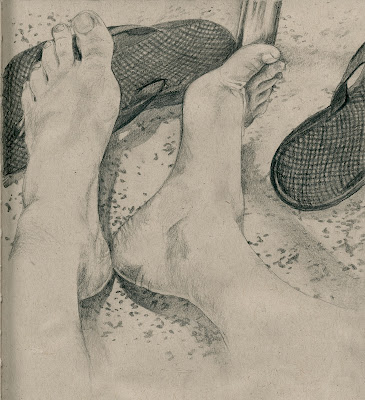Assuming most people don't want quite the level of detail I do, I'm going to try to make a succinct run-through of how I get started on a project like the one I'm working on now. This is pretty much the same process for all my work when there is a clear job/projct/client. Personal stuff tends to be more, well, spontaneous, but not always.
So I'm currently doing a series of illustrations for a business downtown that is a board game cafe. It's a cafe where you can play board games--any from a collection of 500+, so they say. The grand opening is the day before the next Art Walk, so they want to make sure they have awesome art on their walls, and they will, because I'm making it. (Some of it.)
So, Step 1: Find a project. Done.*
Step 2: Take a mental inventory of everything you know about the subject. Think of the most obvious and boring ways to illustrate it in a picture. Think of all the things you could get wrong due to your lack of understanding of the subject. Imagine people making "phhhtt" noises at the picture you are not going to make.
Step 3: Now think about what you would like to do--never mind if it's perfectly appropriate within the parameters of the project for now. pppp. Lay awake thinking of interesting ways to compose pictures that involve your subject. Have a brilliant idea or two. Go to sleep.
 Step 4: Research & Coffee!!! Okay, so I have my idea now--something to do with board games throughout the world and in history. It's an idea I can get excited about; there's variety, depth, culture, escapism... Now I have to go learn something, or many things, that I didn't know before, like where did chess originate anyway, and is Chinese Checkers really Chinese? (My guess was no--I was right.) Put my faith in Wikipedia and Google Image search, and follow any interesting leads. Create folders on desktop to file interesting bits and useful reference material.
Step 4: Research & Coffee!!! Okay, so I have my idea now--something to do with board games throughout the world and in history. It's an idea I can get excited about; there's variety, depth, culture, escapism... Now I have to go learn something, or many things, that I didn't know before, like where did chess originate anyway, and is Chinese Checkers really Chinese? (My guess was no--I was right.) Put my faith in Wikipedia and Google Image search, and follow any interesting leads. Create folders on desktop to file interesting bits and useful reference material.Step 5: Now that I'm bombarded with information and images, I go have another coffee, take a shower and then start to sketch--away from the material I just collected. Now is the time for it to mingle with what's innately in my head. This is how I make sure I start a picture that I actually want to finish, instead of just piecing existing images together and losing interest halfway through. I make a few loose thumbnails arranging things in different ways, thinking a little bit about color and a lot about tone, gesture and composition and not too much about accuracy.
Step 6: Come back the next day and think about accuracy. Do more research. Revise thumbnails.
*Step No-Later-Than-This: EARLY is the best time to lock down on a format if I haven't been given one by the client. Work that's getting framed goes in frames. Just saw some nice 12x16" frames with mats go on sale? I just picked my format! This saves many tears later on.
 Step 7: Think about color. This is where I am now. I often jot down a few notes about color next to my thumbnails. I have my favorite color schemes, and I'm not ashamed of them. Before painting, I will test them out on a scrap just to make sure.
Step 7: Think about color. This is where I am now. I often jot down a few notes about color next to my thumbnails. I have my favorite color schemes, and I'm not ashamed of them. Before painting, I will test them out on a scrap just to make sure.
...after thinking about color, I scan in my thumbnails and do a couple of really rough color comps in Photoshop. I turn the sketch into a transparent layer and then, on a new layer, I scribble in anything close to the right color, using the basic paintbrush tool. Then I use "replace color" and select any area to automatically adjust that color everywhere it appears. So, color, tweak, and repeat until it makes me feel happy.
Steps 8-Finish coming soon!










